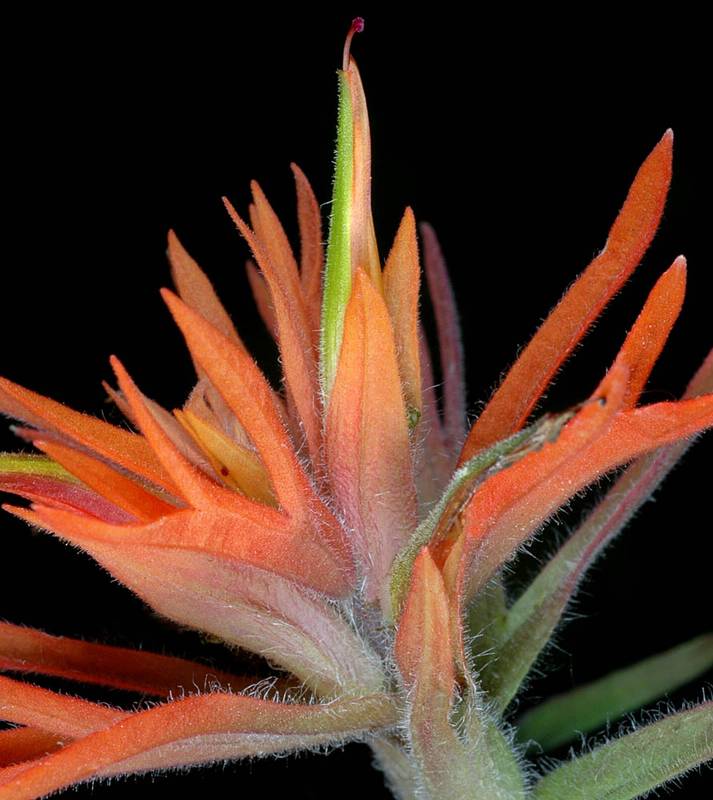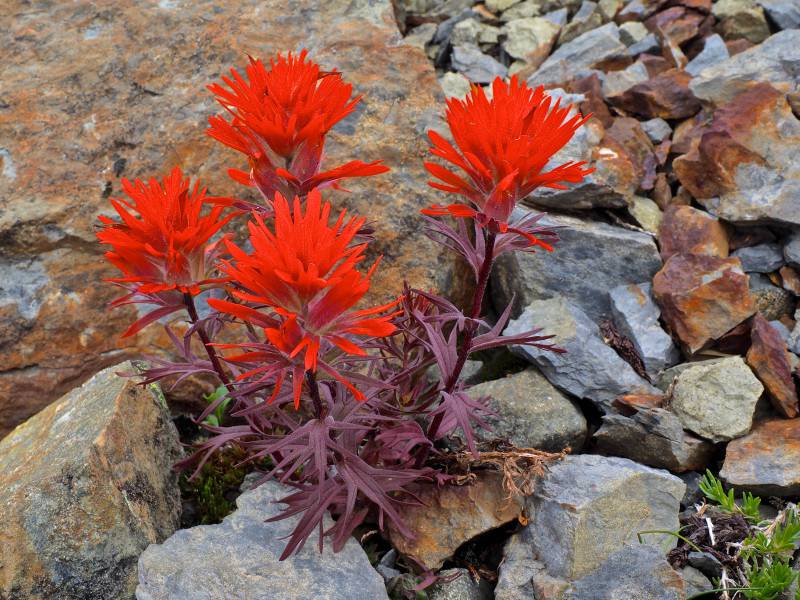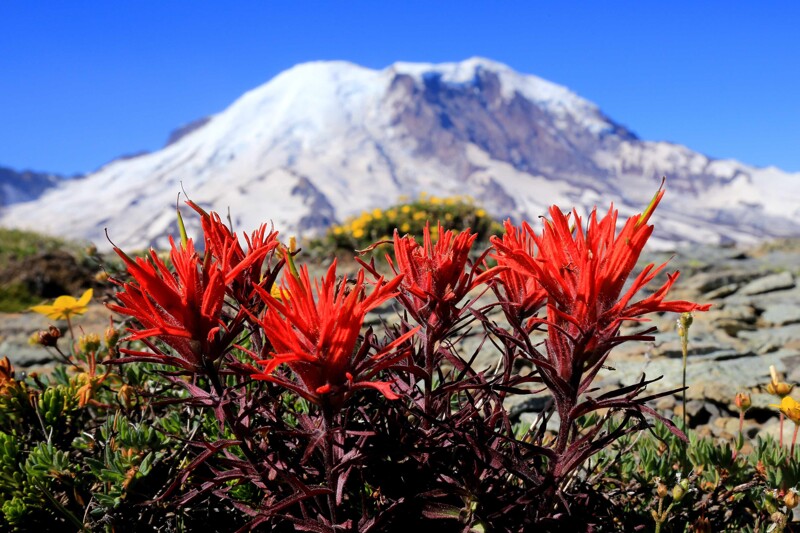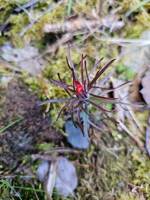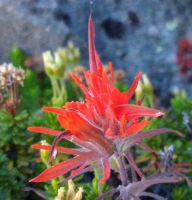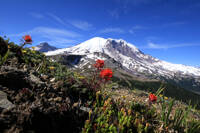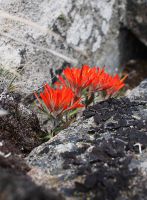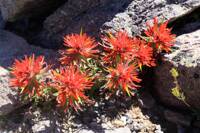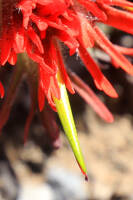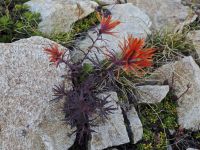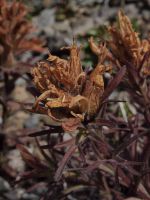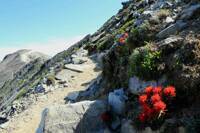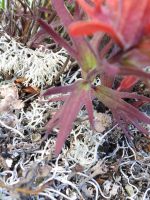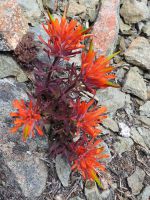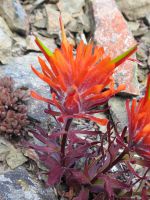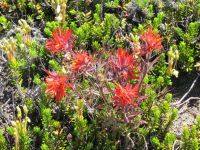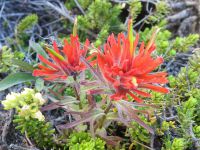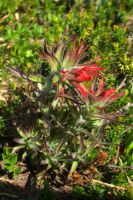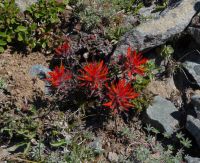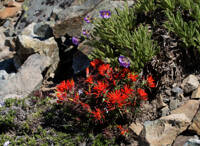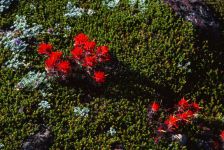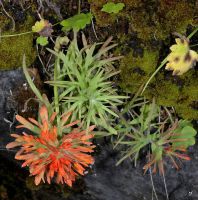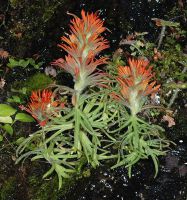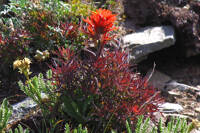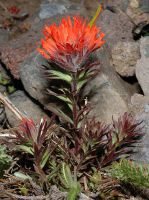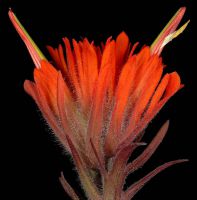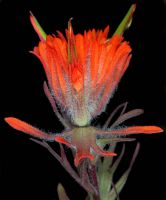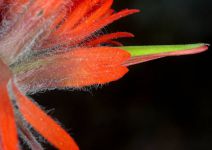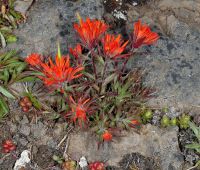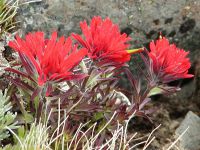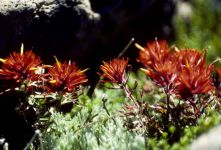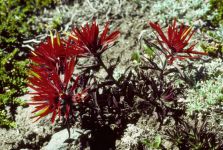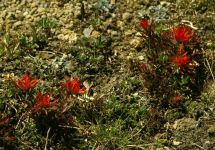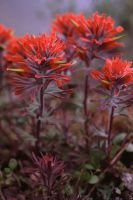Distribution: Occurring chiefly west of the Cascades crest in Washington; southern British Columbia to Oregon.
Habitat: Rock crevices and rocky slopes, usually above timberline.
Flowers: June-August
Origin: Native
Growth Duration: Perennial
Conservation Status: Not of concern
Pollination: Bumblebees, bees, hummingbirds
Perennial, the stems clustered, erect or ascending from a woody base, unbranched, 1-2 dm. tall.
Leaves alternate, finely villous, deeply divided into 3-5 divergent lobes, the lateral segments not much narrower than the mid-blade.
Inflorescence showy, short and few-flowered, bright scarlet or crimson; bracts villous, 5-parted, much shorter than the flowers; calyx 15-25 mm. long, deeply cleft above and below, its primary lobes again divided into 2 segments 1-5 mm. long; corolla 25-35 mm. long, the upper lip equal or longer than the tube and many times longer than the dark green, thickened, lower lip; stamens 4.
Capsule.
Publication: Erythea 6(5): 45-46. 1898.
PNW Herbaria: Specimen records of Castilleja rupicola in the Consortium of Pacific Northwest Herbaria database
WA Flora Checklist: Castilleja rupicola checklist entry
OregonFlora: Castilleja rupicola information
E-Flora BC: Castilleja rupicola atlas page
CalPhotos: Castilleja rupicola photos

